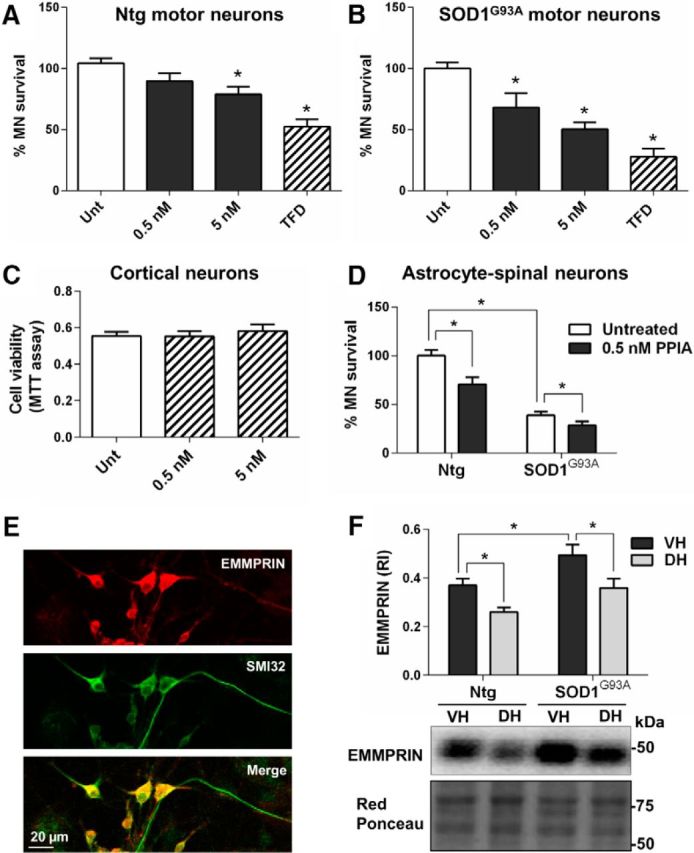Figure 4.

Exogenous PPIA is specifically toxic for motor neurons. A, B, Motor neuron survival was investigated in rat purified motor neurons (MNs) nontransgenic (Ntg; 16–19 wells per condition; A) and expressing SOD1G93A (4 per condition; B) treated for 24 h with 0.5 and 5 nm human recombinant PPIA. Data (mean ± SEM) are percentages of untreated (Unt). TFD, Trophic factor deprivation. *p < 0.05 compared with untreated (Unt) by one-way ANOVA, Dunnett's multiple-comparisons test. C, MTT assay performed in mouse cortical neurons treated for 72 h with 0.5 and 5 nm human recombinant PPIA revealed no change in cell viability compared with untreated (Unt). Results were similar after a 24 h of treatment. Data are expressed as mean ± SEM (n = 5 wells per condition). D, Motor neuron survival decreased both in nontransgenic (Ntg) and SOD1G93A expressing astrocyte–spinal neuron cocultures treated for 6 d with 0.5 nm human recombinant PPIA. Data (mean ± SEM, n = 6 wells per condition) are shown as the percentage of Ntg untreated. *p < 0.05 by one-way ANOVA, Tukey's multiple-comparisons test. E, Representative confocal image of primary spinal neuron culture costained for EMMPRIN (red staining) and SMI32 (green staining). Scale bar, 20 μm. F, Expression of EMMPRIN receptor was increased in ventral horn (VH) lumbar spinal cord of both nontransgenic (Ntg) and SOD1G93A mice (129Sv) at a symptomatic stage (16 weeks of age) compared with dorsal horn (DH) lumbar spinal cord. EMMPRIN immunoreactivity was normalized to protein loading (Red Ponceau). Data, shown as relative immunoreactivity (RI), are expressed as mean ± SEM (n = 5). *p < 0.05 by one-way ANOVA, Fisher's least significant difference test.
